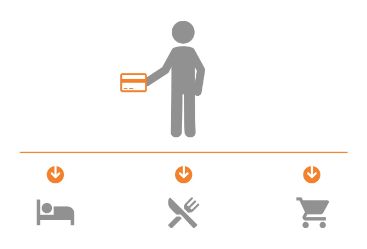Current efforts to contain health costs
21 October 2024 | Comment(s) |
Geneviève Aguirre-Jan

This second blog in a series of three is devoted to examples of measures implemented in recent years to try and limit the surge in health costs borne by the compulsory health insurance (AOS/OKP).
In our first blog, we explained the reasons behind rising healthcare costs. As the rise in costs borne by the public health insurance system has been going on for many years now, the Swiss authorities have taken a number of measures.
What concrete measures have been taken to contain health costs?
Some of these measures have had a curbing impact on costs, while others have failed to limit the increase. During the same period, some decisions were taken that increased the costs incurred by the AOS/OKP. It's like being on a sinking ship! Everything is being done to pump the water out of the boat. But at the same time, more holes are being made in the hull!
The most striking example is the Federal Council's cost containment programme, which is based on an expert report. In summer 2019, the Federal Council submitted a first package of measures to Parliament. Parliament adopted many of the proposed measures.
Outpatient packages and cost monitoring
However, providing policyholders with a copy of their invoice, setting a maximum fine or allowing pilot projects will not really have a rapid, substantial or positive impact on premium payers. In the medium term, the only way to achieve the desired objective would be to promote the use of flat rates in the outpatient sector and to introduce cost monitoring by the healthcare partners.
Generalising pricing models
In the second package, which was submitted to Parliament in September 2022, some important measures were dropped after the consultation procedure, such as the introduction of a first point of contact. Other proposals, such as the extension of services provided by service providers or the clarification of cost sharing in the case of maternity, would lead to increases in the social security system. For the Federal Council, the generalisation of price models would have a positive impact on the prices of medicines. However, this would be at the expense of price transparency. The results in terms of cost control are therefore rather mixed.

Distribution and prices of medicines
In the area of medicines, the Federal Council has already taken a number of measures. For example, in autumn 2023, two amendments were adopted concerning the adjustment of the distribution and faster access to life-saving medicines. In addition, price cuts are regularly ordered for certain medicines. Even if decisions could have been taken that were even more advantageous for premium payers, these changes reduce costs by several hundred million Swiss francs each year.
Two-sided amendments

The compulsory health insurance law (LAMal/KVG) has been amended many times since it came into force in 1996. Over the past decade, these changes have been aimed at improving quality, guaranteeing remuneration for care equipment, limiting the admission of service providers, refining risk compensation and adapting international provisions. Some of these measures could have a moderating effect in the medium term. Others, however, have actually increased the costs borne by the AOS/OKP.
In all cases, the necessary and decisive reforms to contain costs have not been implemented. For this reason, premiums are continuing to rise. Groupe Mutuel's concrete proposals will be set out in our third publication.

























































